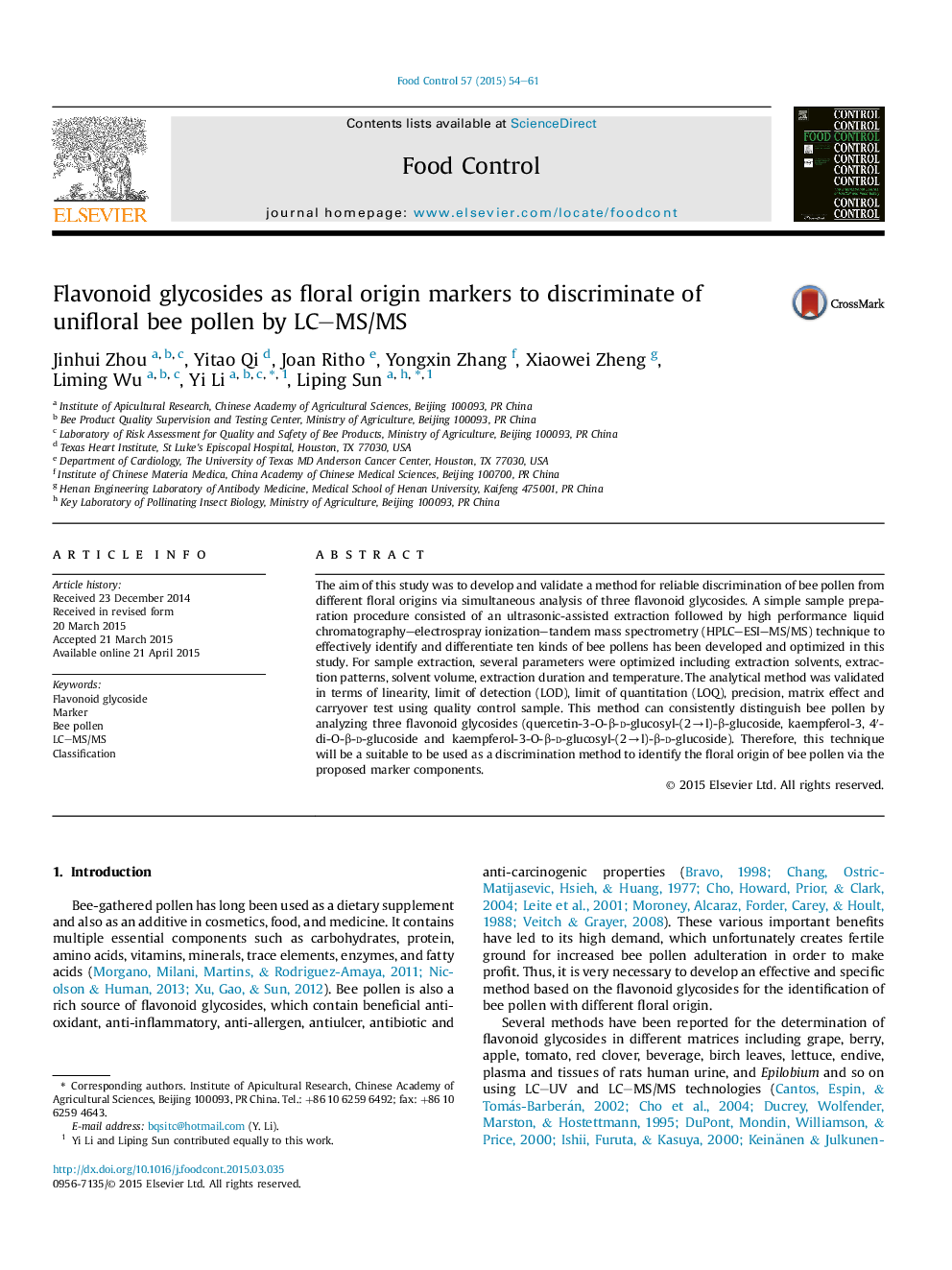| Article ID | Journal | Published Year | Pages | File Type |
|---|---|---|---|---|
| 6390690 | Food Control | 2015 | 8 Pages |
â¢Ethanol (95%) as an environmental-friendly extraction solvent was used.â¢An ultrasonic-assisted extraction was performed.â¢Three flavonoid glycosides were qualified and quantified in bee-gathered pollen.â¢Three markers could distinguish between ten kinds of bee-gathered pollen.â¢This method overcame the inherently subjective inclination of the general method.
The aim of this study was to develop and validate a method for reliable discrimination of bee pollen from different floral origins via simultaneous analysis of three flavonoid glycosides. A simple sample preparation procedure consisted of an ultrasonic-assisted extraction followed by high performance liquid chromatography-electrospray ionization-tandem mass spectrometry (HPLC-ESI-MS/MS) technique to effectively identify and differentiate ten kinds of bee pollens has been developed and optimized in this study. For sample extraction, several parameters were optimized including extraction solvents, extraction patterns, solvent volume, extraction duration and temperature. The analytical method was validated in terms of linearity, limit of detection (LOD), limit of quantitation (LOQ), precision, matrix effect and carryover test using quality control sample. This method can consistently distinguish bee pollen by analyzing three flavonoid glycosides (quercetin-3-O-β-d-glucosyl-(2âl)-β-glucoside, kaempferol-3, 4â²-di-O-β-d-glucoside and kaempferol-3-O-β-d-glucosyl-(2âl)-β-d-glucoside). Therefore, this technique will be a suitable to be used as a discrimination method to identify the floral origin of bee pollen via the proposed marker components.
